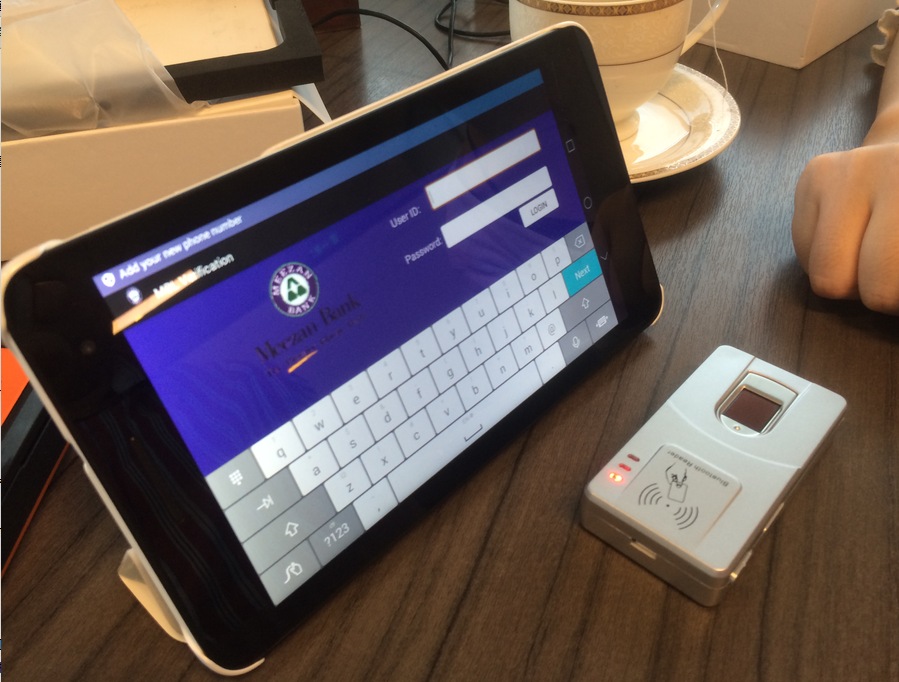إن استخدام ماسحات بصمات الأصابع البيومترية لتسجيل الحضور في الحكومة هو اتجاه لا مفر منه
ماسحات بصمات الأصابع هي نوع من التكنولوجيا التي يمكن استخدامها لأغراض حضور الموظفين في الحكومة. تستخدم هذه الماسحات بصمة إصبع الشخص الفريدة للتحقق من هويته وتسجيل حضوره.

هناك العديد من المزايا لاستخدام ماسحات بصمات الأصابع البيومترية لتسجيل حضور الموظفين في المؤسسات الحكومية. أولاً وقبل كل شيء، إنها طريقة آمنة وموثوقة لضمان حضور الشخص الذي من المفترض أن يكون حاضراً بالفعل. ولأن بصمات الأصابع فريدة من نوعها لكل فرد، فمن المستحيل تقريباً أن ينتحل شخص ما شخصية شخص آخر باستخدام بصمة إصبعه.
بالإضافة إلى كونها آمنة، ماسحات البصمات البيومترية كما أنها فعالة للغاية. فهي قادرة على مسح هوية الشخص والتحقق منها بسرعة، مما يجعل عملية الحضور أسرع وأكثر انسيابية. وقد يكون هذا مفيدًا بشكل خاص للمؤسسات الحكومية الكبيرة أو الأحداث حيث قد يكون تتبع الحضور عملية تستغرق وقتًا طويلاً.
ومع ذلك، هناك أيضًا بعض المخاوف المحتملة بشأن استخدام ماسحات بصمات الأصابع البيومترية لتسجيل الحضور في الدوائر الحكومية. أحد المخاوف الرئيسية هو الخصوصية. قد يشعر بعض الأفراد بعدم الارتياح لفكرة تسجيل بياناتهم البيومترية وتخزينها من قبل الحكومة. من المهم أن تكون الحكومات شفافة بشأن كيفية استخدام هذه البيانات وحمايتها.
ومن بين المخاوف المحتملة الأخرى دقة التكنولوجيا المستخدمة. فرغم أن أجهزة مسح بصمات الأصابع البيومترية موثوقة للغاية عموماً، إلا أن احتمالات الحصول على نتائج إيجابية أو سلبية خاطئة تظل قائمة دوماً. ويتعين على الحكومات أن تضمن معايرة أجهزة المسح وصيانتها على النحو اللائق للحد من هذه الأخطاء.
بشكل عام، يمكن أن تكون أجهزة مسح بصمات الأصابع البيومترية وسيلة فعالة وكفؤة للحكومات لتتبع الحضور. ومع ذلك، من المهم للحكومات معالجة مخاوف الخصوصية وضمان استخدام التكنولوجيا بشكل مسؤول.
20 سببًا لاستخدام أجهزة مسح بصمات الأصابع لتسجيل الحضور والانصراف في الدوائر الحكومية
- دقيقة: تعتبر أجهزة مسح بصمات الأصابع الحيوية دقيقة بشكل لا يصدق ويمكنها ضمان التعرف على الشخص الصحيح.
- يمنع الاحتيال: يمنع الاحتيال وانتحال الشخصية، ويضمن أن الشخص الموجود هو الشخص المتوقع.
- توفير الوقت: تعد أجهزة مسح بصمات الأصابع البيومترية سريعة ويمكن أن تساعد في توفير الوقت عند تسجيل الحضور.
- فعّالة من حيث التكلفة: إنها فعّالة من حيث التكلفة لأنها يمكن أن تقلل من الحاجة إلى موظفين إضافيين لمراقبة الحضور.
- لا حاجة لبطاقات الهوية: تلغي أجهزة مسح بصمات الأصابع الحيوية الحاجة إلى بطاقات الهوية، والتي يمكن فقدها أو سرقتها.
- لا حاجة لكلمات المرور: فهي تلغي الحاجة إلى كلمات المرور، والتي يمكن نسيانها أو مشاركتها أو سرقتها.
- آمنة: تعتبر أجهزة مسح بصمات الأصابع البيومترية آمنة، حيث لا يمكن تكرار البيانات البيومترية أو سرقتها بسهولة.
- غير جراحية: فهي غير جراحية ولا تتطلب أي اتصال جسدي بالجهاز.
- سهلة الاستخدام: تعتبر أجهزة مسح بصمات الأصابع البيومترية سهلة الاستخدام، ويمكن للموظفين تعلم كيفية تشغيلها بسرعة.
- البيانات في الوقت الحقيقي: توفر أجهزة مسح بصمات الأصابع البيومترية بيانات في الوقت الحقيقي، مما يسمح للمديرين بتتبع الحضور في الوقت الحقيقي.
- موثوقة: فهي موثوقة ويمكنها العمل في بيئات مختلفة، بما في ذلك الظروف المتربة أو الرطبة.
- صديق للبيئة: تعتبر أجهزة مسح بصمات الأصابع البيومترية صديقة للبيئة لأنها تلغي الحاجة إلى سجلات الحضور الورقية.
- تقليل الأخطاء: يمكنها تقليل الأخطاء الناجمة عن الإدخال البشري، مما يؤدي إلى الحصول على بيانات حضور أكثر دقة.
- تحسين الإنتاجية: يمكن أن تساعد أجهزة مسح بصمات الأصابع الحيوية في تحسين الإنتاجية من خلال تقليل الوقت المستغرق في المهام المتعلقة بالحضور.
- تعزيز المساءلة: فهو يعزز المساءلة حيث أن بيانات الحضور دقيقة ولا يمكن التلاعب بها.
- تقليل البيروقراطية: يمكن تقليل البيروقراطية من خلال القضاء على الحاجة إلى تتبع الحضور اليدوي وتقليل الأعمال الورقية.
- تعزيز الامتثال: فهو يعزز الامتثال حيث يمكن بسهولة تدقيق بيانات الحضور والوصول إليها لأغراض الامتثال.
- تعزيز الشفافية: يعزز الشفافية حيث يتم تسجيل جميع بيانات الحضور ويمكن الوصول إليها بسهولة.
- تعزيز المساواة: فهو يعزز المساواة من خلال التأكد من أن جميع الموظفين يلتزمون بمعايير الحضور نفسها.
- يدعم العمل عن بعد: يمكن أن تدعم أجهزة مسح بصمات الأصابع البيومترية العمل عن بعد من خلال السماح للموظفين بتسجيل الحضور عن بعد.

كيفية اختيار جهاز مسح بصمات الأصابع المناسب لتسجيل الحضور والانصراف في الدوائر الحكومية
هناك العديد من العوامل التي يجب مراعاتها عند اختيار ماسح بصمات الأصابع المناسب لحضور الحكومة، بما في ذلك
الدقة: من المهم اختيار ماسح بصمات الأصابع الذي يوفر قراءات دقيقة. يجب أن يكون الماسح قادرًا على التعرف على بصمات أصابع جميع الموظفين دون أي أخطاء.
السرعة: يجب أن يكون الماسح الضوئي سريعًا بما يكفي لقراءة بصمات الأصابع بسرعة، خاصة في المؤسسات الحكومية الكبيرة التي تحتاج إلى تسجيل العديد من الموظفين.
المتانة: عادةً ما يكون لدى المؤسسات الحكومية عدد كبير من الموظفين، مما يعني أنه سيتم استخدام ماسح بصمات الأصابع بشكل متكرر. لذلك، من المهم اختيار ماسح متين يمكنه تحمل الاستخدام المكثف.
الاتصال: يجب أن يكون الماسح الضوئي قادرًا على الاتصال بسهولة ببرنامج الوقت والحضور لضمان التكامل السلس مع نظام الوقت والحضور.
الامتثال: يجب أن يتوافق ماسح بصمات الأصابع مع اللوائح الحكومية المتعلقة بخصوصية البيانات وأمانها.
الميزانية: تعتبر تكلفة الماسح الضوئي أيضًا عاملاً مهمًا. من المهم اختيار الماسح الضوئي الذي يتناسب مع ميزانية المؤسسة مع تلبية متطلباتها.
وبناءً على هذه العوامل، فإن بعض ماسحات بصمات الأصابع الشائعة المناسبة لحضور الموظفين الحكوميين تشمل HFSECURITY HF7000 Suprema BioMini Plus 2. قبل اتخاذ القرار النهائي، من المهم البحث ومقارنة ماسحات بصمات الأصابع المختلفة لضمان أن الماسح الضوئي المحدد يلبي احتياجات المنظمة.


